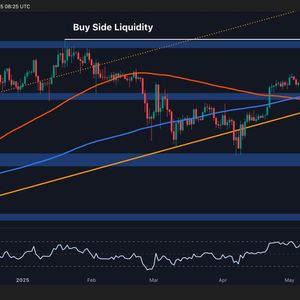Stripe, a payment processing platform, is reportedly talking with global banks about adding stablecoins. This shows that traditional finance is starting to accept blockchain-based assets. It also highlights a big change in how established financial institutions view digital currencies. Stripe Set to Revive Stablecoin Ambitions According to a Bloomberg report , Stripe is exploring ways to get more involved with stablecoins, cryptocurrencies linked to traditional currencies like the U.S. dollar. The goal is to speed up transactions, lower cross-border payment costs, and make accessing financial services easier for businesses worldwide. While there are no formal deals yet, the talk shows that stablecoins could play an important role in the future of global payments. Meanwhile, Stablecoins are becoming essential in fintech, with big companies like PayPal and Visa exploring their uses. If these partnerships succeed, it could help more businesses use stablecoins through Stripe’s large network , which includes millions of businesses in over 80 countries. Recall that the multinational financial firm led by Patrick and John Collison was rumored to have acquired stablecoin platform Bridge in a $1.1 billion deal. The timing of the rumored acquisition came after the payment firm shared plans to support global stablecoin payments. Stripe also took a major step by integrating Circle native tokens, USD Coin (USDC) , into its payment platform. Stablecoin Ecosystem Gains Traction and Forces Regulation The acceptance and use of stablecoins have been on the rise recently. With this increasing traction, the niche has grown to a valuation of $232.13 billion, per a report from Forbes. In light of the sentiments surrounding stablecoins, regulators have swung into action and drafted suitable regulatory frameworks to guide the sector. Two stablecoin regulatory proposals currently being considered are the GENIUS Act and the STABLE Act . However, Coinbase CEO Brian Armstrong has recently urged lawmakers to rethink the approach , citing that it is too strict. He believes that both bills will stifle the innovative and creative spirit in stablecoin providers. In other words, he said the bills will make it harder for stablecoin providers to innovate and create better user products. MiCA Reshapes Stablecoin Dynamics in Europe Meanwhile, the introduction of MiCA has been a game-changer for the stablecoin ecosystem in Europe. These regulations, governing asset-referenced and electronic money tokens, began their phased rollout in June 2024. As reported by TheCoinRise, euro-dominated trading volumes have consistently exceeded 2023 averages throughout 2024. MiCA-compliant stablecoins now dominate the European market. Circle’s EURC, Sociéte Générale’s EURCV, and Banking Circle’s EURI collectively accounted for 91% of market share by November 2024. This dramatic shift reflects the growing alignment between regulatory compliance and market adoption. The post Stripe in Talks With Banks to Integrate Stablecoins: Report appeared first on TheCoinrise.com .


















